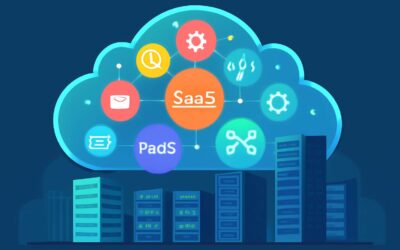Cloud computing is a technology that provides a means of storing data in the cloud. This type of technology is characterized by a number of advantages including increased security and scalability. It also allows companies to store their data remotely. In addition, a single system can perform the same tasks as several other systems.
Cloud architecture is a set of components, which is used to manage cloud computing systems. These include the back end, front end, and middleware. All of these elements are connected through an Internet connection.
The back end of a cloud computing system is the part of the architecture that stores and manages all of the resources that are required to deliver cloud computing services. This includes virtual machines, servers, and huge amounts of storage. Also, the back end is responsible for security mechanisms, protocols, traffic control, and other features.
The front end, on the other hand, is the part of a cloud computing system that allows users to interact with the platform. It contains GUIs and applications, which enable users to access the system and its components. A front end can be any type of software, such as a desktop or mobile device.
While the front end is the most visible component of the cloud architecture, the back end is the most complex. It’s not surprising that the term “backend” is used interchangeably with the word “cloud.” For example, a virtual machine is a “backend” piece of a cloud computing system.
Another crucial component of the cloud architecture is the resource allocation algorithm. This ensures that the right amount of resources is allocated to the right tasks. An automated process will also help to prevent unnecessary expenditures. Among the key factors that make a cloud architecture function well are redundant networks, data encryption, and regular system backups.
The front end is the simplest part of the cloud architecture. In a nutshell, it comprises of a client computer system, user interface, and network. Depending on the cloud system, this might be a browser or a user interface. It’s important to note that this does not mean that the entire system is a single interface, but rather, it refers to the most user-friendly one.
One of the main purposes of a cloud architecture is to provide users with a high-bandwidth user experience. This is achieved by providing the appropriate amount of bandwidth. There are various types of bandwidth, and each provider is different. Users can also choose to use a private cloud, which allows for more flexibility and control.
The front end of a cloud computing system can be implemented on just about any type of computer, and some systems even have their own user interfaces. This is because the cloud is strongly distributed, meaning that the file system spreads over multiple hard drives and systems. Thus, each client can access the files from the server that serves that particular client’s needs.
When choosing a cloud, make sure that it’s user-friendly and provides you with the most important aspects of the cloud. In addition, choose a service provider that provides a wide range of services, such as disaster recovery and data protection.


0 Comments